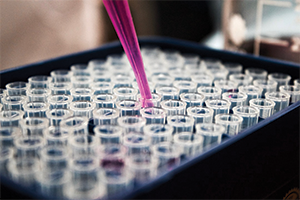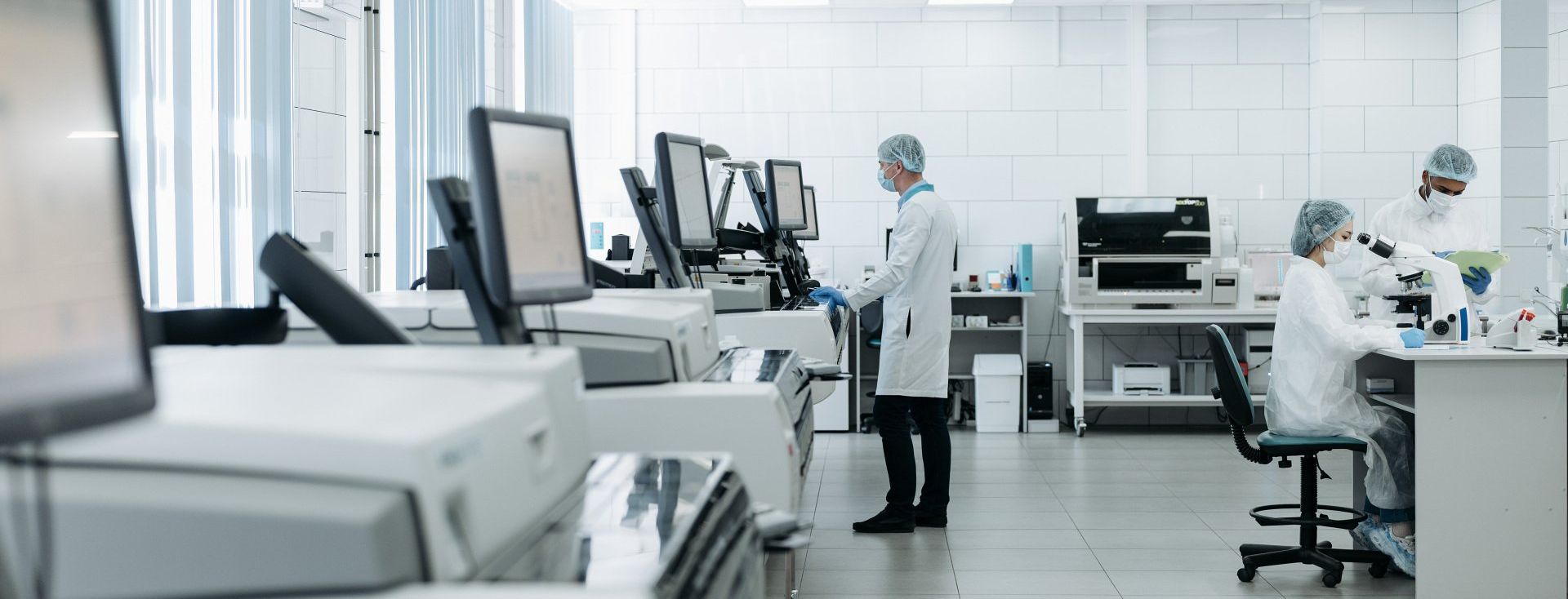How In Silico Studies Speed Drug Discovery
In vitro and in vivo studies have well-known weaknesses. In vitro studies tend to over-simplify the dynamic, complicated environments inside living organisms. In vivo studies require significant time, money, and yet still do not correctly simulate the human body.
Enter in silico studies. Computers are able to handle the manipulation of multiple variables simultaneously, and they can do it much more quickly. Drug development has become increasingly reliant on new software to overcome the challenges we’ve traditionally faced.
PROTEIN-LIGAND DOCKING PREDICTIONS
One area in which computer-aided drug design has been particularly helpful is in predicting protein-ligand docking. Traditionally, scientists have had to brute-force solutions by testing thousands of molecules for the desired activity. It’s a slow, resource-consuming process that results in a low success rate of approximately 1%.
However, when software is used to predict protein-ligand binding, success rates can reach 50%. In one study, protein-ligand poses were predicted with 90% accuracy1.
One challenge that needs to be overcome to further increase accuracy is the simulation of protein flexibility. The 90% accuracy was achieved using one of the only software programs that has partial protein flexibility incorporated into its algorithms.
In reality, receptors are flexible, and present programming challenges. Programming each degree of freedom of movement requires significant time, effort, and digital memory. With that being said, however, 90% is much better than 1%.
CRITICISMS
Some skeptics aren’t so impressed and are withholding praise until it can be better shown that such models lead to improved drug discovery. Currently, success rate is measured against known protein-ligand interactions. Many feel such retroactive benchmarks of success are biased at best.
Still, the area of computer modeling looks promising. There are currently many programs available to aid researchers. Moreover, they are being provided both publicly and free of charge.
The lack of shared knowledge among researchers has commonly been cited as a hindrance to rapid scientific development, so the trend towards open-access information is exciting.
HUMAN PROTEOME
Another source of excitement is that the human proteome has been thoroughly mapped and over 30,000 proteins have been identified2. Some researchers have used this to their advantage by flipping the protein-ligand search. Instead of comparing many molecules against one receptor, they are comparing one molecule to many receptors. This method has the advantage of eliminating molecules that react with non-target proteins.
With all of the developments in protein modeling, it shouldn’t be long before we see more effective drugs entering the market at a higher rate.
CLASSES
The Drug Development Process from Concept to Market
ADME, PK/TK & Drug Metabolism in Drug Discovery and Development
Introduction to Molecular Biology Techniques
1. Wang Z, Sun H, Yao X, et al. Comprehensive evaluation of ten docking programs on a diverse set of protein–ligand complexes: the prediction accuracy of sampling power and scoring power. Phys Chem Chem Phys. 2016;18:12964–12975. doi: 10.1039/C6CP01555G
2. http://www.humanproteomemap.org
Blog Categories
Stay Informed
Have Questions?
You will be able to find answers to most frequently asked questions here
Since 2001 CfPIE has
Check Out Our Life Science Training Courses.
Need help finding the right life sciences training courses? We can help you make the right choice based on your company's needs.
- AMDE, PK/TK & Drug Metabolism in Drug Discovery and Development
- Advanced Topics in Biostatistics for Non-Statisticians
- Analytical Chemistry Principles for Pharmaceutical Scientists
- Analytical Method Validation for Biologics, Biopharmaceuticals and Other Therapeutic Products
- Aseptic Processing in the Manufacture of Biotech and Pharmaceutical Products
- Auditing and Qualifying Suppliers and Vendors
- Best Practices for an Effective Cleaning Validation Program
- Biostatistics for Non-Statisticians
- CMC Regulatory Compliance Strategy for Cell & Gene Therapy Medicines
- CMC Regulatory Compliance Strategy for Recombinant Proteins, Monoclonal Antibodies, & Biosimilars
- Cell and Gene Therapy Product Lifecycle - Introduction Course - Gene Editing, CRISPR/Cas, TALEN Technologies
- Change Control - GMP Requirements and FDA Enforcement
- Cleanroom Fundamentals - Regulation, Science, Design, Practice, Operation & Management
- Clinical Document Management: A Trial-by-Trial Compliance Approach
- Clinical Trial Project Management, Phase 1-4 Best Practices
- Comprehensive Overview of FDA Regulatory Compliance for Drug and Biotech Products
- Computer System Validation
- CRO, CDMO and Non-Clinical Vendor Management Fundamentals
- Development and Validation of Bioanalytical Assays for Biologics: Quantification (PK) and Immunogenicity Assays
- Effective Document Management for Pharma, Biotech & Medical Device
- Effective Internal and External Quality Assurance Auditing for FDA Regulated Industries
- Ethics in Research - Values for Responsible Conduct of Research
- European Regulatory Procedures - EMA & National Requirements
- FDA Inspections - What Regulators Expect and How to Prepare
- GCP Audits - Best Practices for Ensuring Compliance & Detecting Fraud and Misconduct in Clinical Trials
- GMP Training for the QC Laboratory
- Good Clinical Practices (GCP) & Risk Based Monitoring - Understanding and Implementing Current Global Requirements
- Good Laboratory Practice (GLP) for Nonclinical Laboratory Studies
- Good Manufacturing Practices Training | GMP Course
- Human Error Prevention (HEP) - Risk Factors and Strategies
- Implementing and FDA Compliant Stability Program
- Integration of Risk Management Principles and Activities into the Pharmaceutical Quality System
- Intro to Medical Device Submission - 510(s)s, PMAs & Exemptions
- Introduction to Medical Combination Products
- Introduction to Statistical Analysis of Laboratory Data
- Introduction to Vaccines - CMC Regulatory and Quality Aspects
- Laboratory Equipment Validation and Qualification
- Lyophilization Technology - Application of Scientific Principles
- Marketing & Advertising of Pharmaceutical & Medical Devices
- Medical Device Process Validation Training for Professionals
- Medical Devices: Developing Effective Post Market Surveillance and Compliant Handling Systems
- Molecular Biology Techniques - Applications in the Biotechnology and Pharmaceutical Industries
- OTC Drug and Personal Care Product GMP & FDA Regulation
- Oncology Drug Development Course - A Comprehensive Overview
- Overview of FDA Regulatory Compliance for Medical Devices
- Overview of the New EU Medical Devices Regulations: MDR, IVDR, CE Mark and Compliance, QMS Fundamentals
- Pharmaceutical Root Cause Analysis of Failures & Deviations - Developing an Effective CAPA Strategy
- Preparation of FDA Submissions and Communicating with the FDA
- Preparing the CMC Section for NDAs/INDs/CTDs
- Process Validation for Drugs and Biologics
- QbD - Product & Process Optimization using Design of Experiments
- Quality Assurance/Quality Control for Biologics and Biopharmaceuticals
- RNA Biotechnology - An Introductory Course
- Specifications for APIs & Pharmaceutical Drug Products
- Technical Writing for Pharma, Biotech and Med Devices
- The Drug Development Process from Concept to Market
- US Medical Device & Quality Systems Regulations - Design Controls & Validation
- Writing Effective SOP and Other Process Documents
ABOUT US
The Center for Professional Innovation and Education (CfPIE) provides technical training for Pharmaceutical, Biotech, Medical Device and Skin/Cosmetics professionals. CfPIE offers more than 350 class sessions annually across 80 course titles in multiple formats, such as classroom, on-site, and certification programs.
USEFUL LINKS
STAY INFORMED
Your privacy and trust are important to us. We collect your information only for operational and advisory purposes. We do not and will not sell your private information to a 3rd party. By agreeing to this policy, you are giving us permission to contact you about our services and courses.
All Rights Reserved | CfPIE Inc. | Our courses and materials are copyrighted by CfPIE, Inc. and may not be used or reproduced without the written permission of CfPIE, Inc. management. | In partnership with CCC



